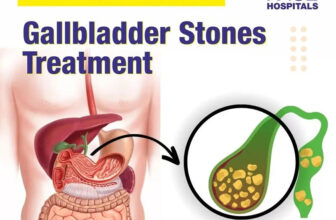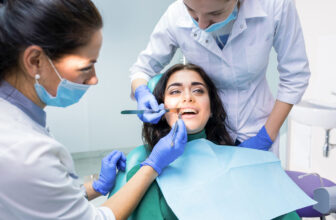
In the evolving world of cosmetic treatments, autologous fat grafting in Dubai has emerged as a top choice for those seeking natural, safe, and long-lasting body enhancement. Also known as fat transfer, this technique uses your own body fat to enhance areas such as the face, breasts, buttocks, or hips—making it an ideal option for patients who prefer a more organic approach to body sculpting.
This guide walks you through everything you need to know about autologous fat grafting, including how it works, its benefits, treatment areas, and why Dubai is a prime location for the procedure.
What Is Autologous Fat Grafting?
Autologous fat grafting is a procedure where fat is removed from one part of your body (usually areas like the abdomen, thighs, or flanks) via liposuction, purified, and then re-injected into areas that need volume or contour.
Because the fat comes from your own body, it’s highly compatible and reduces the risk of rejection or allergic reaction—making it one of the most biocompatible fillers available.
Key Benefits of Fat Grafting
-
100% Natural Material
No synthetic implants or fillers—just your own fat. -
Dual Benefit
Contours donor areas (like belly or thighs) while enhancing target areas. -
Minimal Scarring
Tiny incisions used for extraction and injection result in little to no visible scarring. -
Long-lasting Results
Once the fat cells establish blood supply in the new area, the results can last for years. -
Lower Risk of Reactions
Unlike synthetic fillers, autologous fat is non-allergenic and safe for most people.
Most Common Areas Treated
Autologous fat grafting in Dubai is popular for both facial and body contouring. Some of the most common treatment areas include:
1. Face
Used to restore youthful volume in the cheeks, under-eye hollows, temples, and nasolabial folds. It also improves skin texture and elasticity.
2. Breasts
Fat grafting can subtly enhance breast size or improve symmetry. It’s also used for correcting implant irregularities.
3. Buttocks
As part of a Brazilian Butt Lift (BBL), fat is transferred to the buttocks to enhance volume and shape without implants.
4. Hips and Hip Dips
Fills out indentations to create a smooth, curvier silhouette.
5. Hands
Fat transfer can rejuvenate aging hands by plumping thinning skin and hiding veins.
Who Is a Good Candidate?
You might be a good candidate for autologous fat grafting if you:
-
Have enough body fat in donor areas
-
Desire natural-looking enhancement
-
Are in good general health
-
Don’t want synthetic implants or fillers
-
Have realistic expectations about outcomes
The Procedure: Step-by-Step
1. Consultation
Your surgeon will assess your goals, target areas, and donor fat availability. Photos may be taken, and a personalized plan created.
2. Harvesting the Fat
Fat is extracted through gentle liposuction from pre-decided donor areas (e.g., abdomen, flanks, thighs).
3. Purification
The extracted fat is cleaned and purified using a centrifuge to remove impurities and ensure the highest-quality fat cells are used.
4. Reinjection
Using small cannulas, the fat is carefully injected into the desired areas in multiple layers to ensure smooth, even results.
Recovery and Aftercare
Downtime:
Recovery time depends on the size and number of treated areas. Most patients return to light activity within a few days and resume full activity within 2–3 weeks.
Swelling & Bruising:
Mild to moderate swelling and bruising are expected in both donor and injection sites.
Garments:
Compression garments may be worn around donor sites to reduce swelling and support healing.
Results Timeline:
You may notice immediate improvement, but final results become visible after 3–6 months as swelling reduces and fat cells stabilize.
Why Choose Dubai for Fat Grafting?
Dubai has become a global destination for cosmetic treatments, including fat grafting, because of:
-
Advanced medical technology
-
Internationally trained surgeons
-
High safety standards
-
Customizable treatment plans
-
A multicultural environment that understands diverse beauty goals
Clinics in Dubai also offer discreet services, luxurious recovery settings, and multilingual staff to accommodate international patients.
Tips for Better Results
-
Avoid Smoking
Nicotine compromises blood flow and can reduce fat survival. -
Follow Post-Care Instructions
This includes wearing compression garments and avoiding pressure on injected areas. -
Maintain Stable Weight
Significant weight gain or loss can affect your results. -
Stay Hydrated and Eat Healthy
Support your body’s healing with proper nutrition and hydration—especially important in Dubai’s climate.
Long-Term Expectations
While not all transferred fat survives (around 30–40% may be reabsorbed), the fat that does survive acts like your own tissue and can remain permanently. Some patients opt for a touch-up session after several months to refine the results further.
Autologous Fat Grafting vs. Dermal Fillers
| Material Used | Your own fat | Hyaluronic Acid (HA) |
| Longevity | Permanent (with fat survival) | Temporary (6–18 months) |
| Best For | Large volume areas | Precise contour adjustments |
| Downtime | 1–2 weeks | Minimal |
| Allergic Reactions | Rare | Rare (but possible) |
Why Patients Choose Tajmeels Clinic
When it comes to autologous fat grafting in Dubai, Tajmeels Clinic is a trusted name. Known for its personalized approach, expert surgeons, and cutting-edge technology, Tajmeels offers comprehensive care from consultation to recovery, helping you achieve natural, long-lasting enhancement with safety and precision.
FAQs: Autologous Fat Grafting in Dubai
Q1: Is fat grafting permanent?
Yes, but not all transferred fat survives. Around 60–70% typically remains long-term. Results are considered semi-permanent.
Q2: Is fat grafting better than implants or fillers?
It depends on your goals. Fat grafting is best for those seeking natural enhancement without foreign materials. Fillers offer quicker, short-term improvements.
Q3: How soon can I return to work?
Most patients return to work within 5–7 days, depending on the areas treated and the type of work they do.
Q4: Can I combine fat grafting with other procedures?
Absolutely. Many patients combine fat grafting with liposuction, breast lifts, or facial rejuvenation for a more comprehensive transformation.
Q5: Will I lose the fat if I lose weight later?
Possibly. The grafted fat behaves like regular fat tissue. Significant weight loss may reduce volume in the treated area.
Q6: Are there risks involved?
As with any procedure, risks exist, including infection, bruising, and uneven results. Choosing an experienced provider minimizes these risks.







